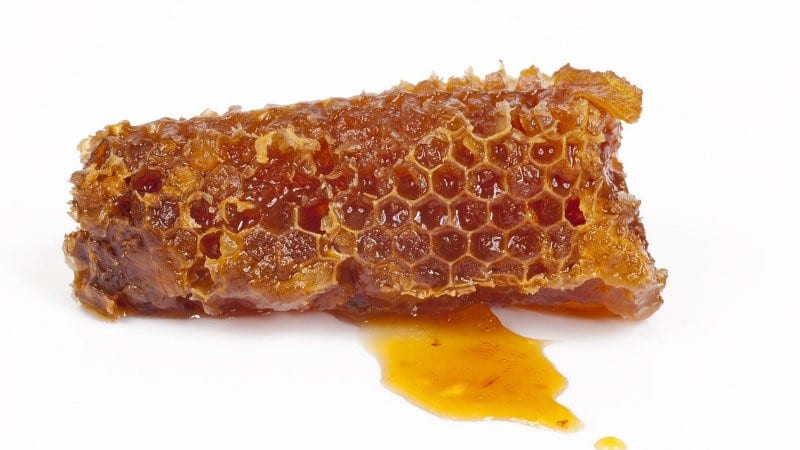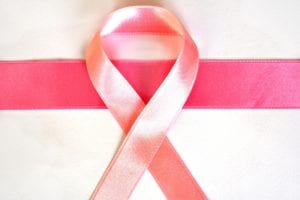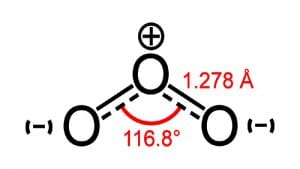Propolis is nature’s own antibiotic substance and a potent immune system booster for the cancer patient. Propolis is a sticky substance gathered by the bees from the leaf buds and bark of trees. It is furthermore combined with the bees’ secretions.
In use since ancient times
Propolis has been used since ancient times for healing wounds, ulcers and sores. Healing with honey and propolis has been practiced in Europe, the Middle East and Asia for centuries. Already in the 17th century, propolis was listed as an official drug in the London pharmacopoeias.
More than 500 compounds have been isolated and identified in bee propolis such as more than 180 phytochemicals including flavonoids (potent anti-oxidants), organic acids and their derivatives: anti-fungal, phytosterols, and essential oil compounds. These compounds are known to have biological activities such as anti-inflammatory, anti-microbial, antimutagentic, antihistamine, and anti-allergenic properties.
Interestingly, bees usually carry waste out of and away from the hive. However, if a small mouse finds its way into the hive and dies there, bees may be unable to carry it out. In that case, they attempt instead to seal the carcass in propolis, essentially mummifying it and making it odorless and harmless.
The health benefits of bee products are much heralded but insufficiently researched. There is evidence that respiratory infections respond to propolis when combined with vitamin C. Propolis is very effective applied topically to both prevent infections and treat infections of wounds and burns. A study comparing Brazilian propolis cream to a silver sulfadiazine salve treating minor burns showed those using the propolis cream showed less inflammation and more rapid closure.
The primary use of propolis has been in immune system enhancement and control of infections. Propolis stimulates the immune system, according to preliminary human studies.
Propolis is very effective against gram positive bacteria (Staphylococcus, Clostridium, Corynebacterium, Streptococcus, Klebsiella and Pseudomonas), but it is less effective against gram negative bacteria (Escherichia, Shigella, Salmonella). This means propolis may or may not work for you depending on which bacteria are causing the problem.
Propolis can be used as a mouthwash. A dropper full of propolis tincture is squirted into small amount of water. It is effective against common oral bacteria that may cause bad breath, periodontal disease such as gingivitis and periodontitis, tooth decay and prevent plaque build-up.
Propolis is expressing anti-fungal properties and reports are available that it is effective against Candida, Microsporum and Trichtophyton. It appears to have anti-viral effects. Thus it is effective against cold virus and herpes simplex virus including cold sores and genital herpes.
Anti-tumoral activity of propolis
Propolis has shown anti-tumoral activity in animal models and cell cultures. It inhibits DNA synthesis in tumour cells, induces apoptosis (cell death) of tumour cells, and activates macrophages to produce factors capable of regulating the function of B-, T- and NK-cells, respectively. Moreover, flavonoids from propolis play a protective role against the toxicity of the chemotherapeutic agents or radiation.
Artepillin C, isolated from propolis, was reported to induce cytotoxicity of carcinomas and malignant melanoma cells by apoptosis, abortive mitosis and mass necrosis. Caffeic acid phenethyl ester (CAPE) and chrysin, bioactive components of propolis, have been shown to have significant biological and pharmacological properties that include antioxidant and anti-inflammatory effects, as well as anti-cancer properties.
The mechanism of propolis-induced apoptosis appears to be independent of the kind of cancer cells studied, but dependent on the concentration of the propolis extract. Thus, several studies have reported that propolis induces apoptosis through the release of cytochrome c from the mitochondria to the cytosol, through the caspase cascade and TRAIL signals.
Propolis extract mixed with water is a key ingredient in the PESHLA method. Clinical studies are in progress to verify the effects of propolis in the prevention and treatment of cancer and other diseases.
References
Almeida ECD, Menezes H. Anti-inflammatory activity of propolis extracts: A review. J. Venom. Anim. Toxins, 2002; 8: 191-212 https://www.researchgate.net/publication/250031404_Anti-inflammatory_activity_of_propolis_extracts_A_review
Burdock G A. Review of the biological properties and toxicity of bee propolis (propolis). Food Chem Toxicol, 1998; 36(4): 347-363 https://www.researchgate.net/publication/13633832_Review_of_the_Biological_Properties_and_Toxicity_of_Bee_Propolis_Propolis
Castaldo S and Capasso F. Propolis, an old remedy used in modern medicine. Fitoterapia, 2002; 73(1): S1–S6. https://www.researchgate.net/publication/10978585_Propolis_An_old_remedy_used_in_modern_medicine
Ghisalberti E L. Propolis: a review. Bee World, 1979; 60(2): 59-84 https://www.researchgate.net/publication/288125476_Propolis_A_Review
Carolyn K. Gibson. Making Healing Remedies with Honey and Propolis. CreateSpace Independent Publishing Platform, 2018
Gómez-Caravaca AM, Gómez-Romero M, Arráez-Román D, Segura-Carretero A, Fernández-Gutiérrez A. Advances in the analysis of products derived from bees. J Pharm Biomed Anal, 2006; 41(4): 1220-1234 https://www.researchgate.net/publication/7159666_Advances_in_the_analysis_of_phenolic_compounds_in_products_derived_from_bees
Khalil ML. Biological activity of bee propolis in health and disease. Asian Pac J Cancer Prev, 2006; 7(1): 22-31
Vani Mamillapalli, Vamsi Meghana Tiyyagura, Mounika Katamneni and Padma Latha Khantamneni. Bee propolis – a novel perspective. EJPMR 2018,5(12), 167-171 https://www.researchgate.net/publication/343151669_BEE_PROPOLIS-A_NOVEL_PERSPECTIVE
Orsolic N. A review of propolis antitumour action in vivo and in vitro. Journal of ApiProduct and ApiMedical Science, 2010; 2:1–20. https://www.researchgate.net/publication/250278579_A_review_of_propolis_antitumor_action_in_vivo_and_in_vitro
Joseph E Pizzorno, Michael T Murray. Textbook of natural medicine. Elsevier, 2021
Premratanachai P, Chanchao C. Review of the anticancer activities of bee products. Asian Pac J Trop Biomed. 2014;4(5):337-344. https://www.researchgate.net/publication/265298774_Review_of_the_anticancer_activities_of_bee_products
Christer Sundqvist. The PESHLA method. PetraFoundation.com, 29.1.2020 https://www.petrafoundation.com/en/blog/the-peshla-method
Vijay D Wagh. Propolis: A Wonder Bees Product and Its Pharmacological Potentials. Advances in Pharmacological Sciences 2013(1):308249 https://www.researchgate.net/publication/259560310_Propolis_A_Wonder_Bees_Product_and_Its_Pharmacological_Potentials
4,668 total views


